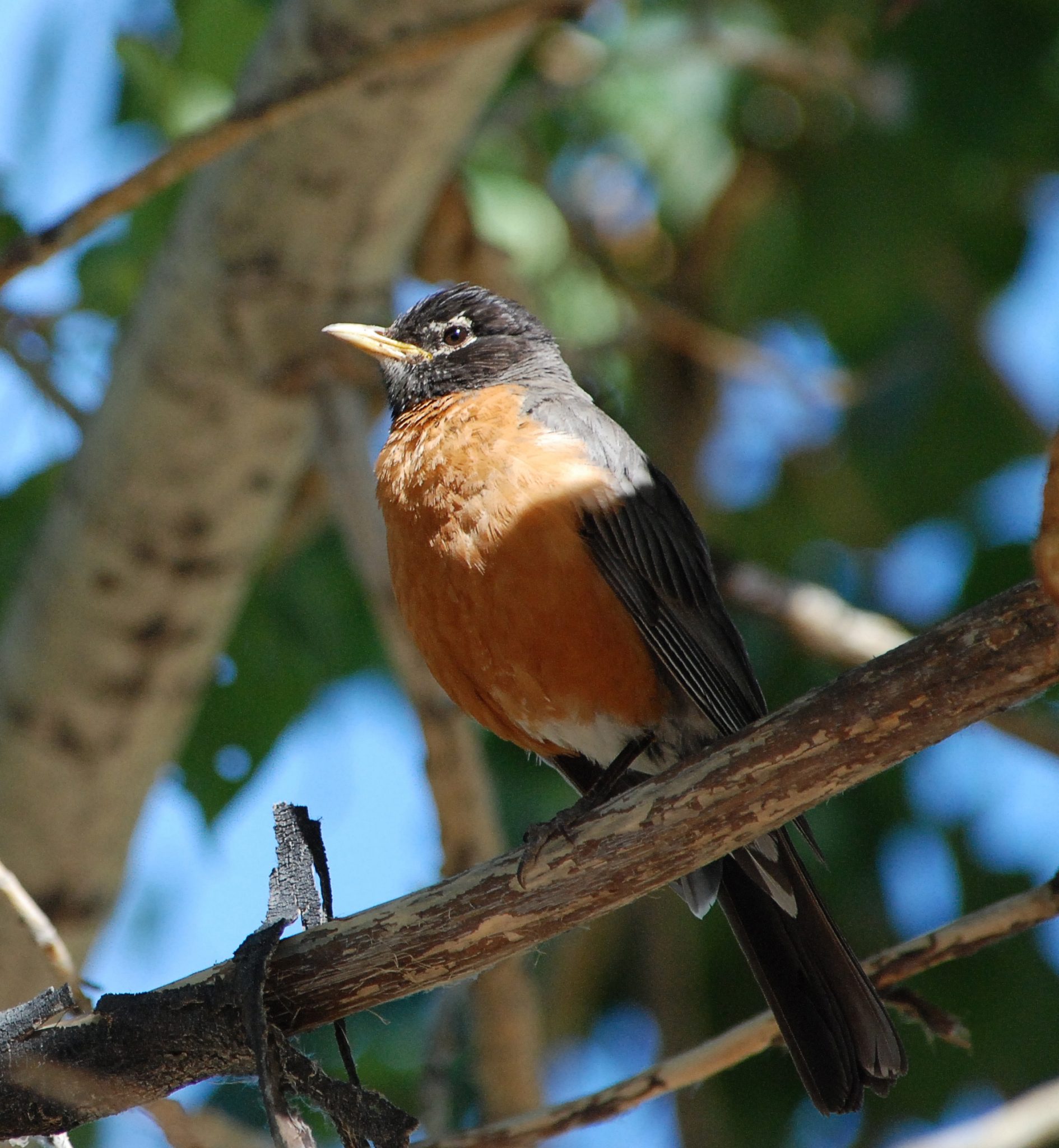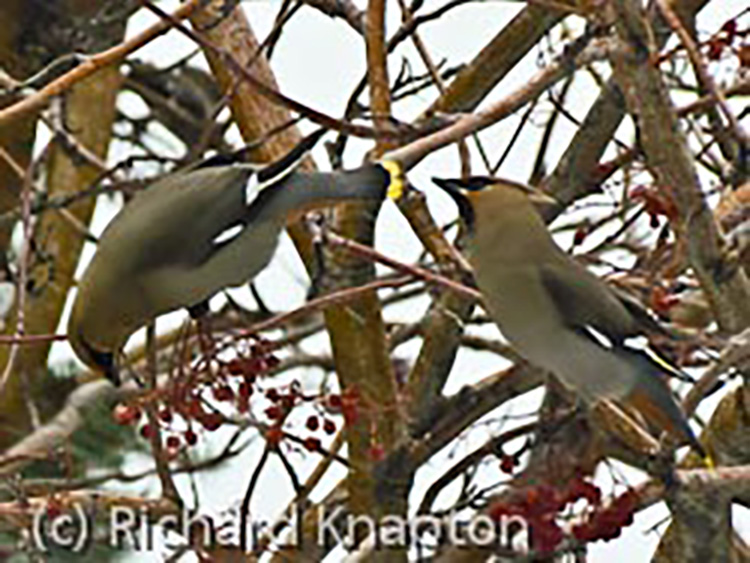 These last few days (April 2012), as snow and low temperatures have returned, we have had the pleasure of watching at close quarters a multitude of birds foraging on the mountain ash trees in our garden. The sudden snowfall and plummeting temperatures no doubt caused a mass influx of both American robins (dozens) and Bohemian waxwings (hundreds) into our neighbourhood and onto the several mountain ashes here, including ours. Prior to this snowfall, American robins were foraging on the ground, flicking over leaves as they searched for juicy invertebrates; with the snowfall they have switched to gobbling berries of the Mountain ash, which likely serves as valuable subsistence food until the snow disappears from ground cover and they can resume searching for more juicy invertebrates. This underscores the value of a berry-producing tree such as Mountain ash, not just in mid-winter for waxwings and house finches, but at times like this in spring when there is a critical need for a food source to tide birds over until warm weather returns. As for the waxwings, the berries serve as a convenient and timely food source on their migration north.
These last few days (April 2012), as snow and low temperatures have returned, we have had the pleasure of watching at close quarters a multitude of birds foraging on the mountain ash trees in our garden. The sudden snowfall and plummeting temperatures no doubt caused a mass influx of both American robins (dozens) and Bohemian waxwings (hundreds) into our neighbourhood and onto the several mountain ashes here, including ours. Prior to this snowfall, American robins were foraging on the ground, flicking over leaves as they searched for juicy invertebrates; with the snowfall they have switched to gobbling berries of the Mountain ash, which likely serves as valuable subsistence food until the snow disappears from ground cover and they can resume searching for more juicy invertebrates. This underscores the value of a berry-producing tree such as Mountain ash, not just in mid-winter for waxwings and house finches, but at times like this in spring when there is a critical need for a food source to tide birds over until warm weather returns. As for the waxwings, the berries serve as a convenient and timely food source on their migration north.
NB: If you have a tree that is an attraction to yellow-bellied sapsuckers each spring, and you’d like to dissuade them from tapping your tree, then now (mid-April) is a good time to wrap the trunk in burlap – very effective!
(Exclusive to the EHS Website)

















